cherry blossom peak bloom at night, culture, japanese food, yozakura
Best Cherry Blossom Peak Bloom at Night: Yozakura
James Lau
Posted on April 17, 2023
Share:
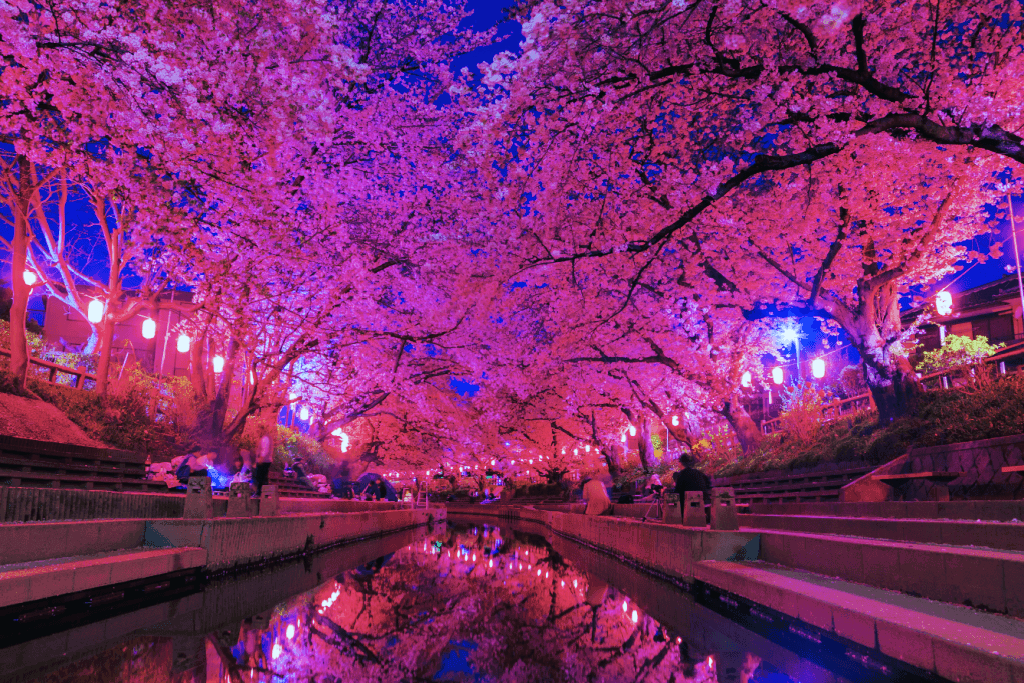
If you plan to visit Japan while the cherry blossom is in peak bloom, you’ll enjoy the breathtaking beauty of “yozakura” or view cherry blossoms at night. The practice of illuminating cherry blossom trees dates back to the Edo period, and it’s a beautiful way to enjoy the stunning scenery uniquely and magically.
What is Yozakura?
In Japan, cherry blossoms are one of the most beautiful natural phenomena. They mark the arrival of spring. People worldwide come to see the stunning pink and white blossoms, which typically only last for a short period, from late March to early May, depending on the location and weather conditions.
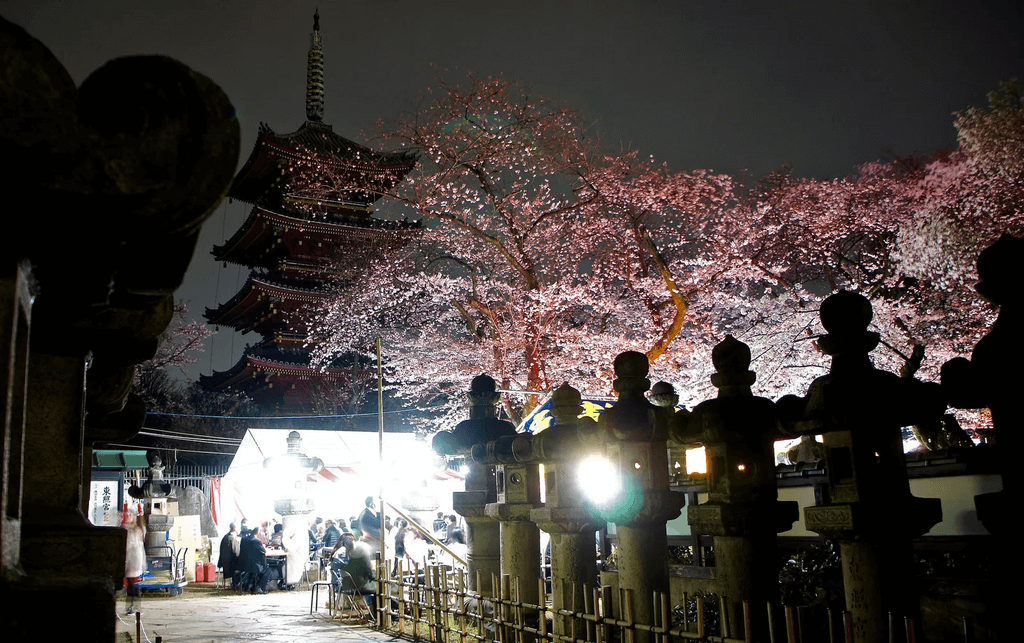
It’s a magical time of the year when parks and gardens transform into a sea of pink and white petals. People gather to celebrate with picnics and parties under the trees. But while cherry blossom viewing, or hanami, is typically associated with daytime activities, there is another way to experience the magic of sakura: yozakura, or cherry blossom viewing at night.
What does it mean?
Yozakura is a term in Japanese that refers to the sight of cherry blossom trees at night. The term “yozakura” comes from the Japanese words “yo,” meaning “night,” and “sakura,” meaning “cherry blossom.”
Many people enjoy picnics under the cherry blossom trees during the daytime, but yozakura offers a different experience. Yozakura allows people to see the beauty of cherry blossom trees in a different light. The soft illumination of the cherry blossom trees at night creates a magical atmosphere that is both romantic and peaceful.
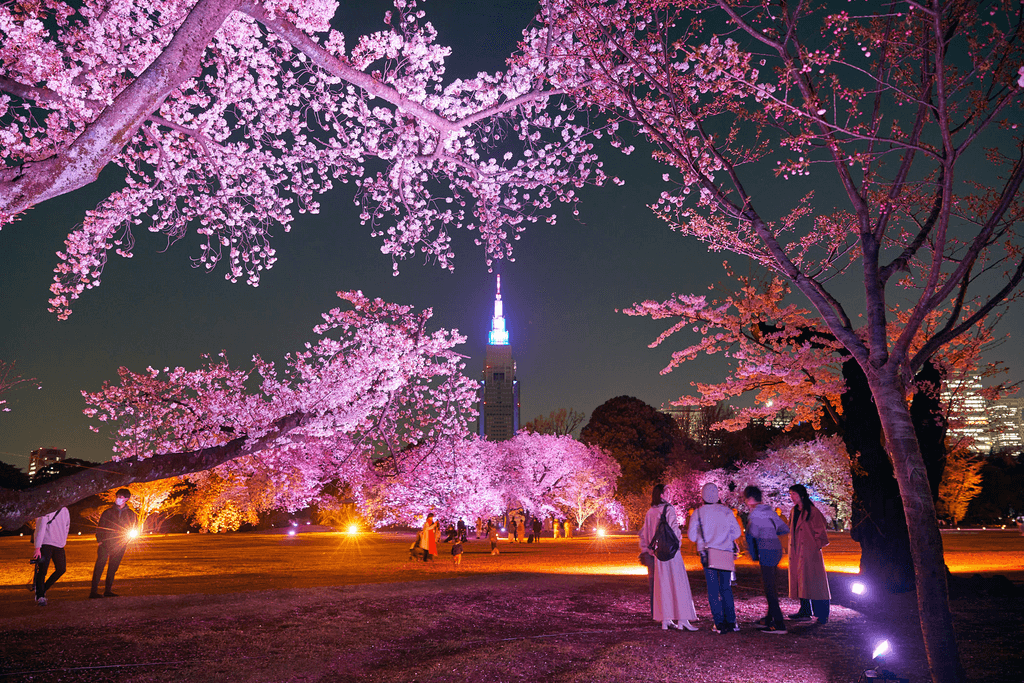
The beauty of the cherry blossoms at night is remarkable, and experiencing them is a unique way to appreciate them. People usually enjoy taking leisure walks under the illuminated trees or having picnics with friends and family while gazing at the starry sky.
Looking to make your nighttime cherry blossom experience even better? Check out Sakuraco! Sakuraco delivers traditional Japanese snacks, teas, sweets, and snacks from local Japanese makers directly to your door so you can enjoy the latest sweet treats directly from Japan!
The History of Yozakura
Cherry blossom illuminations are a tradition that originated during the Edo period from 1603 to 1868. During this time, nobles and samurais hosted moon-viewing parties known as tsukimi in the autumn months. These parties happen under the full moon’s light, often featuring traditional poetry readings and music performances.
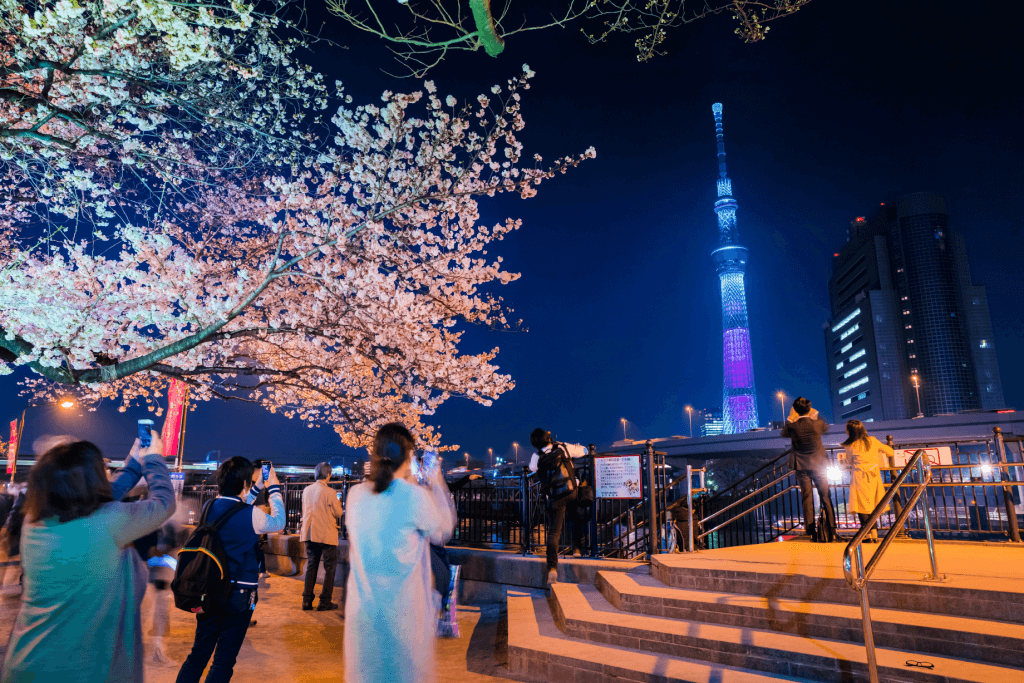
Illuminating cherry blossom trees at night became more popular during the Meiji period. To be more specific, commoners who couldn’t attend the more exclusive midsummer moon-viewing parties opted for yozakura events instead.
The first yozakura event was in Ueno Park in 1915 when the then-new electric lights illuminated the park’s sakura trees. Since then, yozakura has become a beloved tradition in Japan, celebrated in national parks and gardens.
The Cherry Blossom in Peak Bloom Experience at Night
Viewing cherry blossoms at night in Japan offers a magical experience for visitors. As the sun sets and the sky darkens, these trees are adorned with soft, colorful lights, creating a peaceful and romantic atmosphere that is truly enchanting.
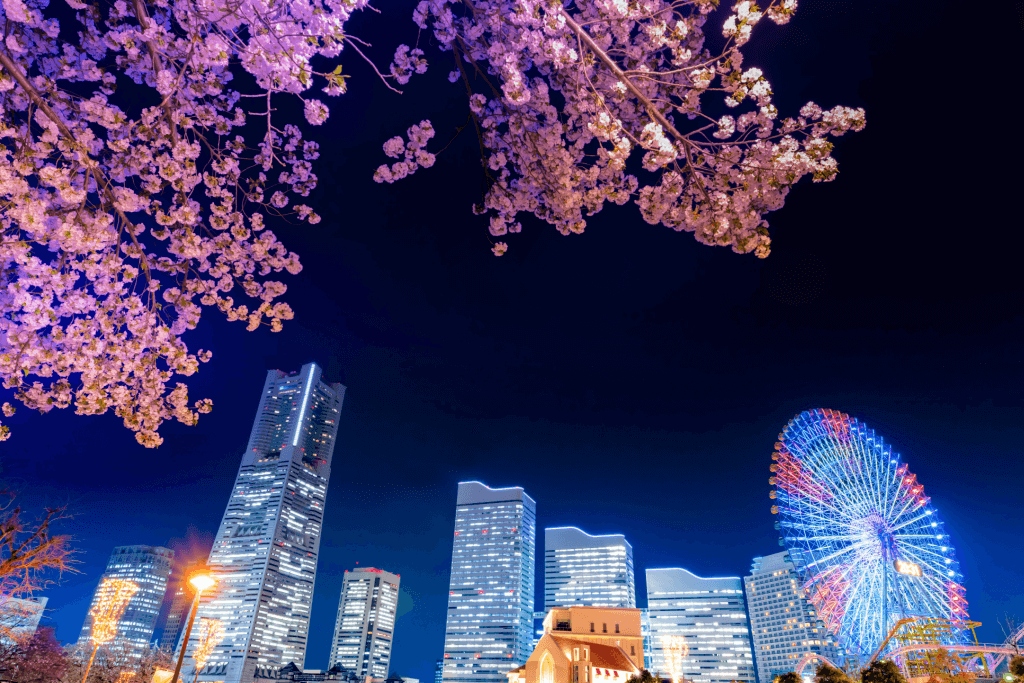
The glow of the cherry blossoms against the night sky is breathtaking, and the sight is awe-inspiring when viewed from a distance. The illuminated trees are mesmerizing, and visitors can enjoy the beauty of the blossoms with much fewer crowds.
Yozakura Festivals
In addition to the visual beauty of yozakura, they also have unique festivals. Many parks and gardens have food and drink stalls set up during the yozakura season, offering traditional Japanese snacks and beverages. Sipping on hot tea or sake while enjoying the soft glow of the cherry blossoms under the stars provides an unforgettable experience.
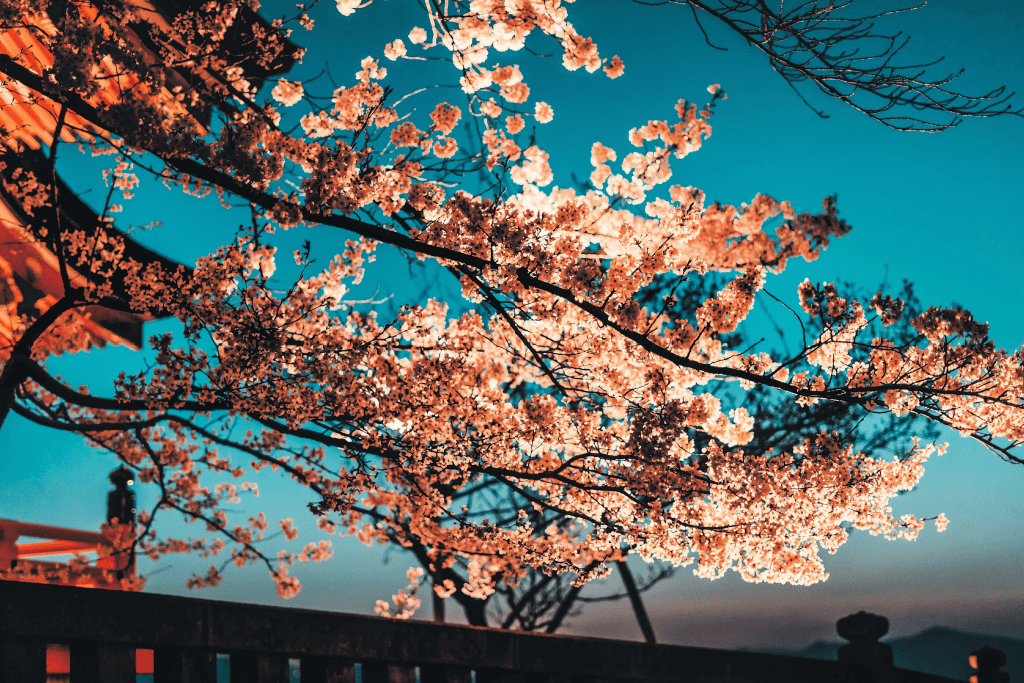
The atmosphere of yozakura is peaceful and the perfect way to escape the busyness of daily life. It’s a time to slow down, reflect, and appreciate the nature around us. Many people find yozakura a spiritual experience because the fleeting sakura reminds us to appreciate the present moment.
People celebrate yozakura in various parts of Japan, but one of the most popular places to experience it is Tokyo. The city is known for its many parks and gardens where the trees are visibly in full bloom during the spring.
Where can I see yozakura?
Popular spots for yozakura in Tokyo are Ueno Park, Shinjuku Gyoen National Garden, and Chidorigafuchi Park. Yozakura is a magical and unforgettable experience celebrating life’s short, bittersweet moments and Japan’s national flower. It has gained worldwide popularity due to its breathtaking beauty, enchanting atmosphere, and cultural significance.
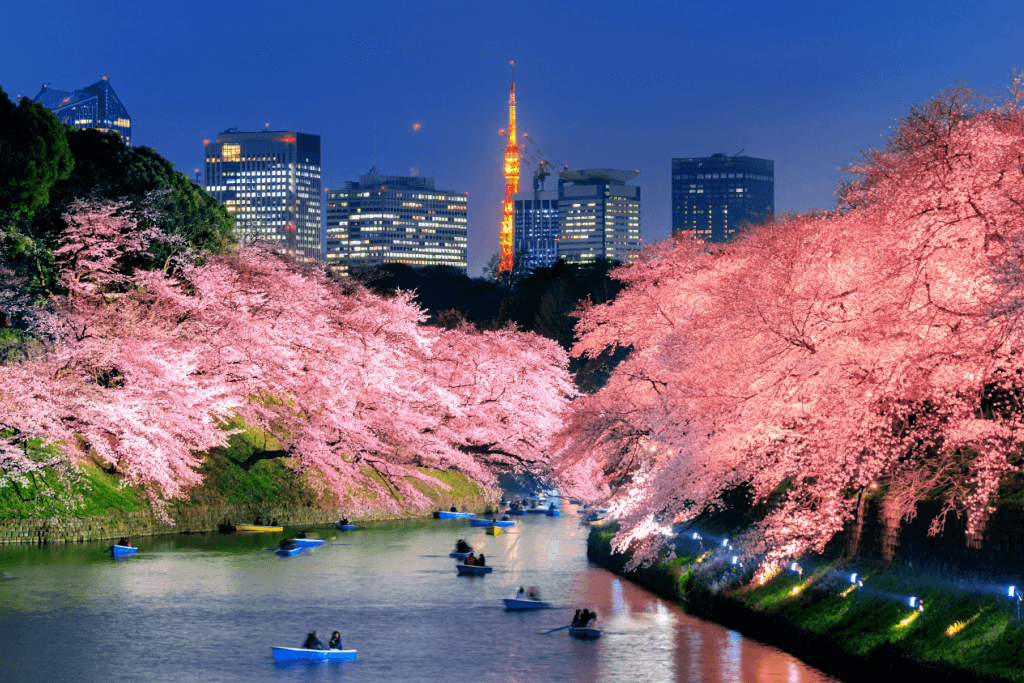
If you plan a trip to Japan during the cherry blossom peak bloom season, add yozakura to your itinerary and prepare to be swept away by the stunning scenery and peaceful atmosphere. Whether traveling solo or with loved ones, the experience of viewing cherry blossoms at night is one to cherish for a lifetime.

Discover authentic flavors with Sakuraco
Get Sakuraco 

Discover authentic flavors with Sakuraco
Get Sakuraco 
Related Articles

Japanese Fish Bait: The Beautiful Art of Kebari
Kebari are traditional hand-tied flies used for freshwater fishing in Japan, especially in mountain streams where small insects form the main diet of native fish. Instead of bright plastic lures, kebari use feathers, thread, and natural materials to create subtle movements in the water.

Japan Holidays Guide: Relax, Explore, and Delight in Festive Fun
As the year draws to a close, everywhere buzzes with preparations for the holidays, and Japan is no exception. Despite the cold winter weather, you can feel warmth in the scenery, decorations, and festive activities across the country. Let’s explore the unique experiences of holidays in Japan that many people dream of enjoying at least once in their lifetime!

Tokyo Gardens: Five Beautiful Traditional Japanese Gardens to Visit
Tokyo gardens offer a relaxing escape for visitors looking to get a breath of fresh air. However, Tokyo has more than just the typical gardens we see in the West. Let’s explore five traditional Japanese gardens and what makes them unique!

Japan Cruise Spotlight: The Ultimate Guide to Abashiri Icebreaker!
Japan offers a diverse range of cruise experiences, taking in various stunning landscapes. But, in the chilly grip of winter, some voyages pull in adventurers from around the globe. At the forefront of these wintry trips is the Abashiri Icebreaker Cruise in Hokkaido.



